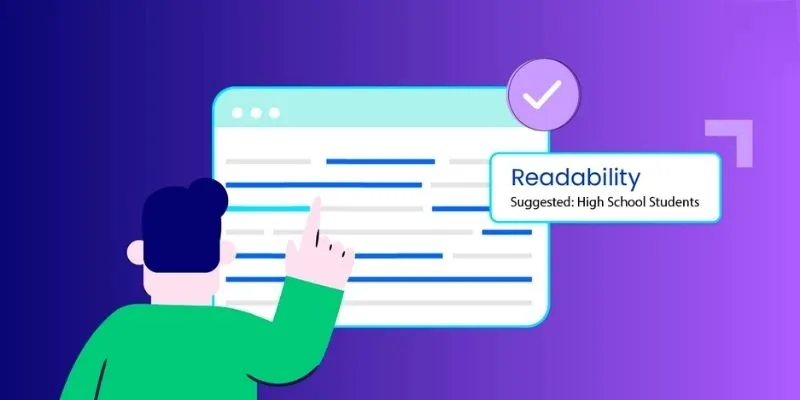Creating engaging and readable content is essential to attract and retain your audience. Readability ensures your ideas are effectively communicated and encourages readers to interact with your material. Whether you are writing a blog, an article, or a webpage, improving readability should be a top priority. This guide will provide actionable tips on enhancing readability in your content.
Importance of Readability
Readability refers to how easily readers can comprehend and interact with your content. High readability boosts user engagement, reduces bounce rates, and improves your content’s overall performance in search engines. Even the most valuable information can be overlooked if it is hard to read. Enrolling in a Content Writing Course in Chennai can help you master the art of crafting clear, engaging, and reader-friendly content that captures attention and drives results.
How to Improve Readability?
1. Use Simple and Clear Language
Overcomplicated language can confuse readers and drive them away. Instead:
- Opt for shorter sentences and paragraphs.
- Avoid technical jargon unless it is essential for your audience.
- Replace complex words with simpler alternatives.
For example, instead of saying “utilize,” say “use.” Simplicity makes your content more approachable and inclusive.
2. Break Up Long Text Blocks
Large chunks of text can overwhelm readers and make them lose interest. Break your content into digestible sections by:
- Adding subheadings.
- Using bullet points or numbered lists.
- Incorporating white space to give the page a clean look.
For a more structured approach to formatting content effectively, consider enrolling in a Content Writing Online Course to learn practical techniques for creating reader-friendly layouts.
3. Choose an Appropriate Font and Formatting
Typography significantly impacts readability. To ensure your content is reader-friendly:
- Use a standard, legible font like Arial, Verdana, or Georgia.
- Maintain a font sizes of at least 14px for body text.
- Highlight key point with bold or italic text.
Proper formatting ensures that readers can focus on the content without straining their eyes.
Read more: How to Leverage Unix and Linux in Cloud Computing?
4. Write for Your Audience
Understanding your target audience is crucial. Tailor your tone, vocabulary, and style to match their preferences. For instance:
- A professional audience may prefer formal writing with detailed explanations.
- Casual readers might appreciate a conversational tone and relatable examples.
When your audience feels understood, they are more likely to stay engaged. To gain a deeper understanding of audience-specific content strategies, you can explore SEO Training in Chennai, which often emphasizes targeting content to the right demographics effectively.
5. Use Visuals to Support Your Content
Visual elements like images, infographics, and videos break monotony and enhance understanding. They help illustrate complex ideas and keep readers interested. Ensure visuals are:
- Relevant to the topic.
- High-quality and appropriately sized.
- Accompanied by descriptive captions for context.
Adding visuals strategically makes your content more engaging and dynamic.
6. Optimize for SEO Without Sacrificing Readability
Search engine optimization (SEO) is essential, but overloading your content with keywords can compromise its readability. To balance SEO and readability:
- Integrate keywords naturally into the text.
- Avoid keyword stuffing.
- Use descriptive meta tags and headers.
Readable content that is optimized for search engine ensures you attract and retain visitors. Enrolling in an SEO Online Course can equip you with advanced techniques to enhance your content’s visibility while maintaining its quality.
7. Leverage Readability Tools
Online tools can help analyze and improve your content’s readability. Popular options include:
- Hemingway Editor: Highlights overly complex sentences and suggests improvements.
- Grammarly: Provides grammar, punctuation, and style recommendations.
- Yoast SEO: Offers readability analysis tailored for web content.
Regularly using these tool can help you develop a clearer and more consistent writing style.
8. Edit and Proofread Thoroughly
Editing and proofreading are essential steps in content creation. During this process:
- Eliminate redundancies and filler words.
- Fix grammatical and spelling errors.
- Read aloud to identify awkward phrasing or flow issues.
Polished content builds credibility and keeps readers engaged.
Improving the readability of your content benefits both your audience and your brand. By focusing on clarity, structure, and presentation, you can create contents that resonates with readers and delivers value. To further refines your skills and stay ahead in the competitive market, consider exploring IT Courses in Chennai that offer specialized training in content creation and digital marketing.
Readable content not only strengthens your message but also leaves a lastings impression on your audience. Make it a priority, and watch your engagement grow!
Read more: How can I Optimize Data Science Pipelines in Java?

